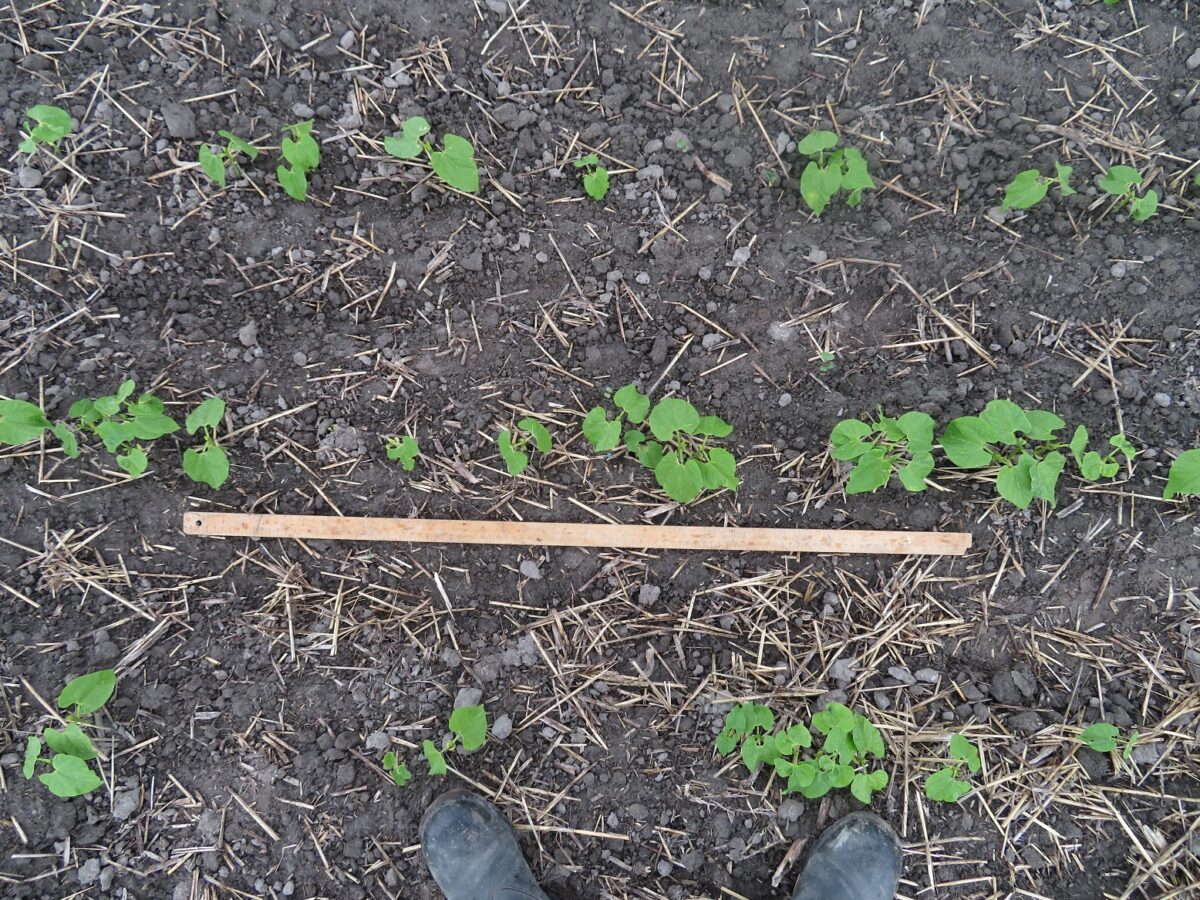Generally speaking, early June is the best time to plant dry beans. Planting should occur after the risk of spring frost has past and when there is not a risk of heavy rain after planting. The ideal germination temperature for dry edible beans is 15°C or above. The table below displays the ideal planting dates…Continue readingPlanting Date
Category: Planting
Seed Quality
Using high-quality, pedigreed seed from inspected fields is important to promote early season vigour and reduce the risk of seed-borne disease. Bacterial blights, anthracnose and BCMV are seed-borne diseases that cause serious issues in some years. Most coloured bean seed (except black bean seed) is imported from arid growing regions in the U.S. where there…Continue readingSeed Quality
Inoculation
The species of rhizobia for dry edible beans is Rhizobium leguminosarum biovar phaseoli. Dry edible beans are less efficient at fixing nitrogen through rhizobia than soybeans or other legumes. Inoculation trials and routine use of an inoculant have not shown an economic advantage in Ontario, even though other regions do suggest inoculant use for virgin…Continue readingInoculation
Stand Assessments and Replant Decisions
An adequate stand of dry edible beans is a minimum of two-thirds to three- quarters of a full stand. Dry edible beans have a limited ability to branch and compensate Continue readingStand Assessments and Replant Decisions
Plant Development
Bean varieties are characterized by their growth habit. Indeterminate plants continuously grow and exhibit long vines. Most of the commonly grown bean types have a semi-determinate growth habit, meaning they continue to grow after flowering begins and develop short to long vines. Determinate types tend to flower and ripen over a short period. Determinate types…Continue readingPlant Development
Laboratories are accredited by the Canadian Food Inspection Agency (CFIA). Laboratories marked with * are also accredited to test for seed purity. Canadian Seed Laboratories Ltd.* P.O. Box 217 208 St. David St. Lindsay, ON K9V 5Z4 Tel: (705) 328-1648 Fax: (705) 324-2550 Canadian Seed Laboratories Ltd. is also accredited to do some seed disease…Continue readingOntario Labs Offering Custom Seed Germination Testing
Dealing with Soil Crusting
Pounding rains from thunderstorms can result in severe crusting on heavy soil types, or soils with poor aggregate stability, and can inhibit bean emergence, particularly if hot, dry conditions bake the soil surface. Soil loosening and aeration may be required. There is no advantage to waiting once a crust has been identified. Waiting may increase…Continue readingDealing with Soil Crusting
The response of navy and pinto beans to narrow row production have been tested since indeterminate upright cultivars were developed in the 1980’s. Ablett (1988) found a 28% yield increase in narrow rows with high populations, but only if the plots were mechanically harvested. Six unpublished Ontario studies between 1980-1987 found an average narrow row…Continue readingNarrow Row Cranberry and Kidney Bean Production, 2006-2007
A total of 8 planting date experiments were conducted in 2014 and 2015 at Exeter and Ridgetown research stationsContinue readingDry Edible Bean Planting Dates: 2014-15 Trial Results








